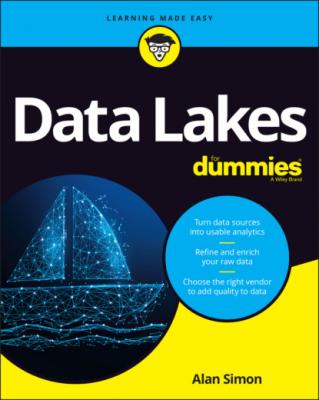Data Lakes For Dummies. Alan R. Simon
Чтение книги онлайн.
Читать онлайн книгу Data Lakes For Dummies - Alan R. Simon страница 22
 like the overall idea of a data lake. But you’re talking about overhauling almost all your current analytical data environment. Over the past couple of decades, your organization has spent a ton of money on a couple of data warehouses, not to mention hundreds of data marts. And that was just the start!
like the overall idea of a data lake. But you’re talking about overhauling almost all your current analytical data environment. Over the past couple of decades, your organization has spent a ton of money on a couple of data warehouses, not to mention hundreds of data marts. And that was just the start!
Every budget planning cycle, your CFO groans at the price tag of keeping those data warehouses and data marts running. The servers, the database software, the staff to keep things up and running … sure, everyone in your organization would love to stop writing those huge checks every year to keep those old systems running. But wouldn’t a data lake mean starting all over from scratch with a gigantic price tag?
Not necessarily! In fact, your new data lake presents you with the opportunity to get a grip on your overall analytical costs, as well as to get started without having to write a seven- or even eight-figure check.
Too good to be true? Thanks to the financials of cloud computing, you can have your data lake and drink it, too. (Wow, that was a really bad metaphor, but you get the idea.)
Almost all data lakes are built and deployed on a cloud computing platform, such as Amazon Web Services (AWS) or Microsoft Azure. With cloud computing, you can tiptoe into new technology using a pay-by-the-drink model. (Now that metaphor works much better!)
Chances are, your organization’s data warehouses and data marts were built in — and are still hosted in — your company data center. Even if your IT organization uses an outside data center for the actual hosting, you still had to write some pretty big checks for every aspect of your current data warehouses and data marts, and you probably have some all-inclusive hosting contracts with your outside data center providers.
You’ll build your data lake in a phased, iterative, and incremental manner (see Chapter 17). With cloud computing, you can pay as you go along each phase, with tighter controls over your financial outlays for your data lake than you had with your earlier data warehouses and data marts.
But you’ll have the opportunity for a fresh start with new technology and new approaches to enterprise analytics, without the need to make a gigantic investment up front as you bravely enter this new world of data lakes.
Конец ознакомительного фрагмента.
Текст предоставлен ООО «ЛитРес».
Прочитайте эту книгу целиком, купив полную легальную версию на ЛитРес.
Безопасно оплатить книгу можно банковской картой Visa, MasterCard, Maestro, со счета мобильного телефона, с платежного терминала, в салоне МТС или Связной, через PayPal, WebMoney, Яндекс.Деньги, QIWI Кошелек, бонусными картами или другим удобным Вам способом.